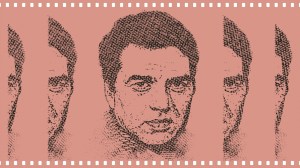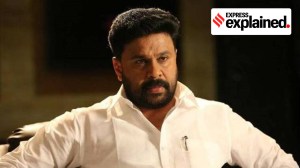What the animal world teaches fathers about raising children
Several males of several species make great dads, but very few make loving step-dads
 The seahorse wins the best pop award for the way he loving carries the eggs deposited by his bride after a loving tail-entwining romance (CREDIT: Wikimedia Commons)
The seahorse wins the best pop award for the way he loving carries the eggs deposited by his bride after a loving tail-entwining romance (CREDIT: Wikimedia Commons)In the animal kingdom it’s usually the moms that feed, clean, bring up and train the kids: the pops are usually out philandering or serving as security. There are, however, a number of intrepid dads who have taken up the gauntlet and the role as equal if not primary caregivers to their brats. Perhaps, this is best seen in the avian kingdom where often both parents work their tails off to feed and clean their bottomless-pit broods: where single-parent families would just not work. One rough rule of thumb to figure out whether this is or is not so, is to check whether the cock bird and the hen of a particular species wear the same plumage – like in crows. If they do (or if the difference in their attire is not too striking), it usually means that both parents are caregivers. If not, as in the peafowl, it usually means that brood-raising is almost entirely left to the mom, while the dad goes around looking glamorous and checking out the girls. The mom is usually cryptically coloured, so that she melds into the background and doesn’t draw the attention of predators; the pop has no such worries and puts on the most gaudy, glamorous glad rags that he can to catch the attention of the babes.
But yes, there are exceptions to the rule; some remarkable single-pop families that we’ll meet here, or at least families where childcare is divided fifty-fifty.
In the avian kingdom, the spider-footed jacanas and snipe provide splendid examples of total daddy-day-and-night care. Here, it is the lady that fights other ladies, beak and claw for her beau, lays her eggs in a pad on the ground, bungs him into it and goes off looking for other viragoes she can fight and whose fiancés she can shanghai! In species like the pheasant-tailed jacana, both sexes dress alike, but in the painted snipe for example it is the lady who dresses up to the hilt while her partner remains humbly ethnic. I guess this goes some way in compensating for the behavior of that chauvinist – the baya – who after settling one wife in a splendid home (“centrally air-conditioned, modular kitchen my dear”) starts building another for a new wife and then another.
But number one in my book would be the seahorse, where after a loving tail-entwining romance, the bride coyly deposits up to 1500 eggs in her groom’s tummy pouch where they are fertilised and will remain, the pouch turning into a paunch! Papa is pregnant and in due course, births tiny replica seahorses (sea-colts and sea fillies) while mom may hang around benignly to check that all is well.
There are species of fishes and frogs where much the same thing happens, where the eggs are taken care of (for example, by being regularly hydrated) by the dads, who also ensure (in one species of frog by valiantly kicking out) that predators keep their distance. (Like us, so many animals too find the young, tender and appetizing). Some species of fish and frogs even hide their kids in their mouths when danger lurks, and I often wonder if one or two babies don’t get inadvertently swallowed, while being mumbled around inside.
Sometimes, parenting is divided fifty-fifty as in the magnificent Emperor penguins that live in the frozen wastes of Antarctica. The female carefully deposits a single precious egg on the brood pouch between her partner’s feet and goes off on a shopping trip (on foot), to the ocean that may last two months (so husbands should stop complaining while waiting for their wives in supermarkets). Barely being able to hop around and ensuring that the precious egg doesn’t for a second touch the frozen ground, the male waits anxiously, eating nothing all the while. Thankfully, he is not alone – there are many like him, and they will shuffle around in circles to ensure that each takes its turn at being at the outer freezing circumference of the ring, before moving inwards and taking advantage of their collective body heat. Eventually the mom returns with her tummy (which substitutes as a grocery bag) full, and very carefully the egg is transferred to her, before her husband is off to the ocean to fish. If the egg hatches before the mom returns, he will nourish the baby with ‘crop milk’.
Among the larger animals, it’s the canids that seem to believe most in shared parenting. In packs of wolves and wild dogs, it’s usually only the alpha pair that breed, and both parents (as well as others in the pack) look after the squalling litters. Lion dads seem to find it beneath their dignity to have anything to do with their brats (except protect them to the death), the better-tempered among them tolerating having their flicking tail-tufts treated as legitimate prey!
But yes, in times of stress the males do step up to the plate: there was that famous Ranthambore tiger, for example, who successfully brought up his partner’s cubs after her death.
It’s not only paternal love that’s behind some of this kind of behaviour. I have watched big dada-rhesus males, play ludicrously with toddlers – all to win votes from their moms – who really hold the power in the group. Exactly like greasy politicians kissing babies.
So, several males of several species make great dads, but very few (if any I wonder) make loving step-dads. In species after species, a new powerful male who overcomes the ruling patriarch will systematically butcher the former’s babies so that the females will be willing to mate with him. Now that is not gentlemanly!
- 01
- 02
- 03
- 04
- 05































